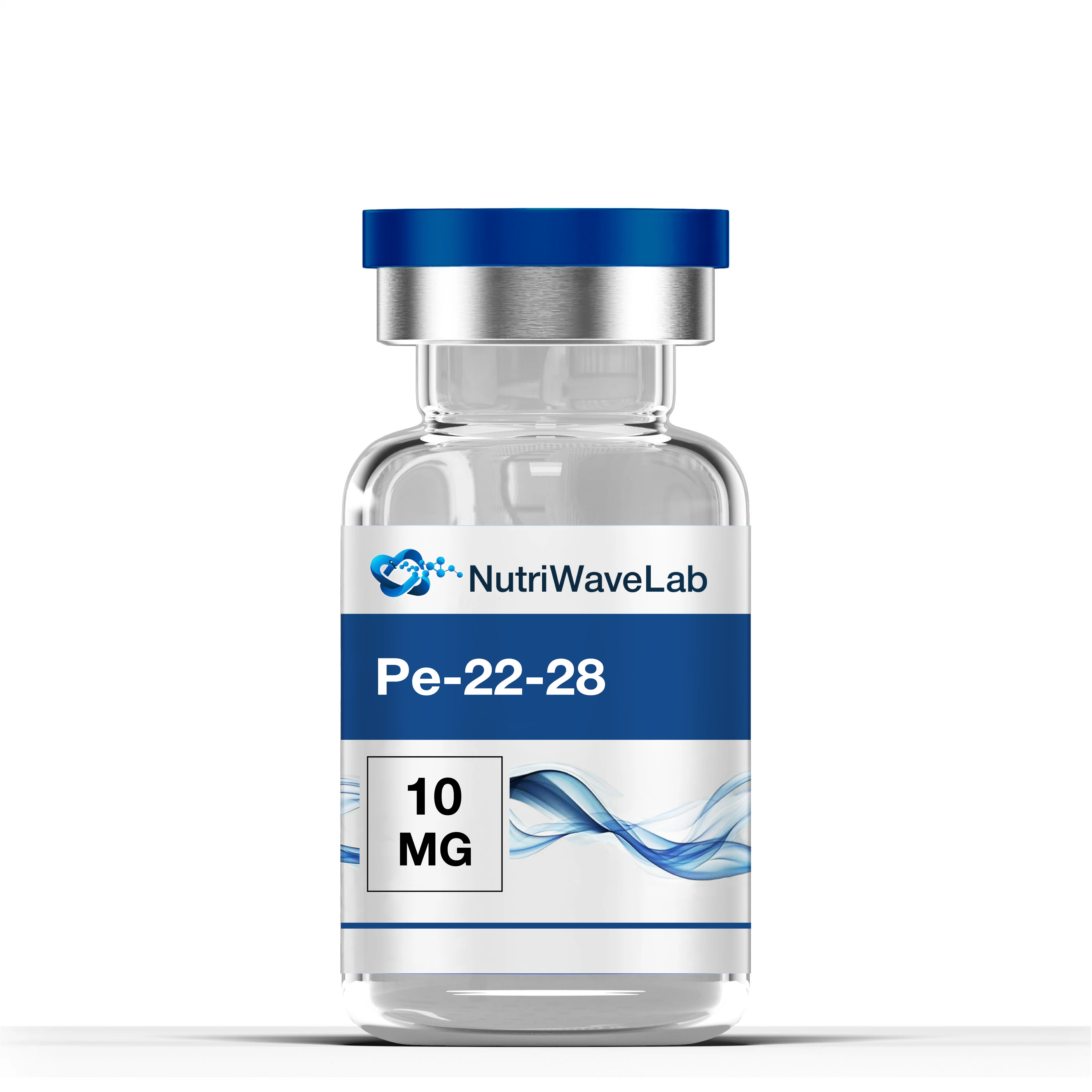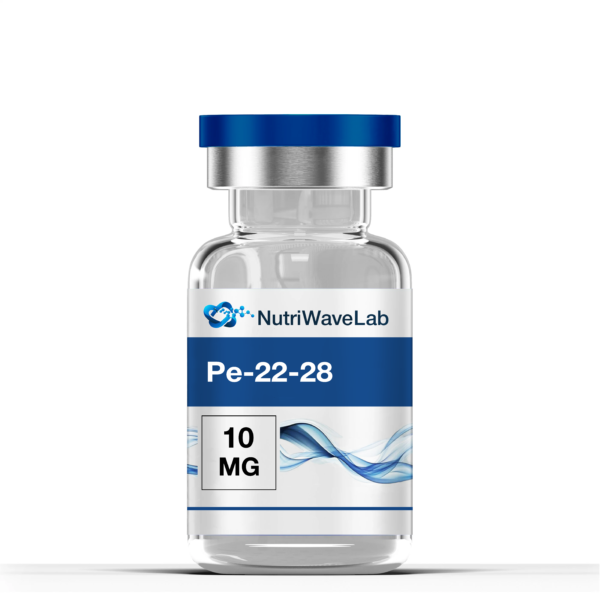PE-22-28 10mg
$0.00
- when buying 5 units of goods 5% discount
- when buying 10 units of goods 8% discount
9 in stock
PE-22-28 (NAP Peptide)
Neuroprotective Fragment of the Activity-Dependent Neuroprotective Protein (ADNP)
Chemical Identity
-
Type: Neuroactive peptide (short fragment of ADNP)
-
Amino Acid Sequence: NAPVSIPQ
-
Molecular Formula: C₄₃H₆₅N₁₁O₁₂
-
Molecular Weight: 879.03 g/mol
-
CAS Number: 944612-39-3
-
PubChem CID: 102091689
-
Synonyms: NAP Peptide, NAPVSIPQ, PE-22-28, Activity-Dependent Neuroprotective Peptide Fragment
Overview
PE-22-28 is an eight-amino-acid peptide fragment derived from the Activity-Dependent Neuroprotective Protein (ADNP) — a critical regulatory protein first discovered by Israeli neuroscientist Prof. Illana Gozes in the late 1990s.
ADNP is essential for brain development, neuronal survival, and synaptic repair. Its short active sequence, NAP (PE-22-28), was found to reproduce many of ADNP’s neuroprotective and regenerative effects in a compact, highly bioavailable form.
Due to its small size, PE-22-28 readily crosses the blood–brain barrier, interacting directly with microtubules, astrocytes, and neurons to maintain cellular stability under oxidative stress, hypoxia, and inflammation. It is considered one of the most promising neuropeptide models for cognitive and mitochondrial resilience.
Mechanisms of Action
🧠 1. Microtubule Stabilization
PE-22-28 binds to tubulin, promoting microtubule stability and protecting the neuronal cytoskeleton from degradation caused by oxidative or excitotoxic stress.
This stabilizing effect prevents axonal and dendritic degeneration, maintaining neuronal structure and intracellular transport.
⚡ 2. Neuroprotection and Anti-Apoptotic Signaling
The peptide reduces cell death under conditions of hypoxia, oxidative imbalance, and inflammation.
It modulates key survival pathways, including Bcl-2, CREB, and MAP-kinase, while suppressing glial overactivation and neuroinflammatory responses.
🧬 3. Modulation of Neurotrophic Factors
PE-22-28 enhances the expression of Brain-Derived Neurotrophic Factor (BDNF) and Nerve Growth Factor (NGF) — crucial molecules for learning, memory, and neuroplasticity.
This results in improved synaptic density and neuronal connectivity.
🔋 4. Mitochondrial Protection
Preclinical data demonstrate improved mitochondrial respiration and reduced reactive oxygen species (ROS) accumulation, suggesting strong support for cellular energy balance and protection against metabolic stress.
💤 5. Stress Adaptation and Cortisol Regulation
Through its influence on the hypothalamic–pituitary–adrenal (HPA) axis, PE-22-28 helps normalize cortisol rhythms and reduce stress-induced neurotoxicity, making it a focus of research in stress-related cognitive impairment and burnout syndromes.
Research Background
🧪 In Vitro Studies
Conducted on hippocampal neurons, astrocytes, and glial cultures under oxidative or hypoxic stress.
Results:
-
Stabilization of neuronal microtubules
-
Reduced apoptosis and ROS formation
-
Enhanced mitochondrial potential and cell survival
-
Upregulation of BDNF and synaptic proteins
🧍♂️ In Vivo Animal Studies
Models: traumatic brain injury, ischemia, Alzheimer’s and Parkinson’s disease, and stress-induced cognitive decline.
Findings:
-
Improved learning and spatial memory (Morris water maze, Y-maze tests)
-
Increased synaptic density and neurotrophic signaling
-
Reduced tau phosphorylation and β-amyloid toxicity
-
Faster behavioral recovery after chronic stress or hypoxia
👩⚕️ Early-Stage Human Research
PE-22-28 (NAP) has been evaluated in early clinical trials in Israel, the U.S., and Europe under the development program of Allon Therapeutics.
It demonstrated excellent tolerability and potential cognitive benefits in studies exploring its role in autism spectrum disorders, Alzheimer’s disease, and stress-related cognitive dysfunction.
Key Research Directions
| Research Focus | Reported / Potential Effects |
|---|---|
| Neuroprotection | Decreased neuronal apoptosis, enhanced cell survival |
| Cognitive Enhancement | Improved learning, focus, and memory recall |
| Neurodegenerative Disorders | Reduced amyloid and tau toxicity, cytoskeletal stabilization |
| Stress & Cortisol Regulation | Lower cortisol output, emotional stability |
| Mitochondrial Function | Improved ATP production and reduced oxidative stress |
Biological Significance
PE-22-28 represents a compact yet highly potent neuroactive molecule, capable of influencing neuronal repair and resilience at the cellular and molecular level.
It acts as a neurotrophic and cytoskeletal modulator, bridging the gap between classical nootropics and regenerative neurotherapeutics.
The peptide’s combined effects on microtubule integrity, mitochondrial efficiency, and neurotrophic signaling make it a compelling target for ongoing research in cognitive longevity and neuroprotection.
Scientific Perspective
PE-22-28 has inspired a new class of microtubule-stabilizing neuropeptides, now being explored as next-generation agents for neurodegenerative, cognitive, and stress-induced disorders.
Future research continues to evaluate its role in:
-
Cognitive aging and early Alzheimer’s disease
-
Post-traumatic brain recovery
-
Stress-induced neuroendocrine imbalance
-
Mitochondrial and synaptic restoration
⚠️ Disclaimer
PE-22-28 (NAP Peptide, ADNP Fragment) is intended for research and educational use only.
Not approved for human or veterinary consumption.
Not intended to diagnose, treat, or prevent any disease.



Reviews
Clear filtersThere are no reviews yet.